Literary Identity for the Youth
Prologue: Introducing The Importance of Identity
"We read to know we are not alone." - C.S. Lewis
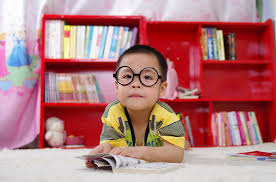
At the vulnerable ages within childhood and adolescence, individuals are on a journey of developing their own identities. This growth and self-discovery is not dependent on the youth themselves. We can consider this journey as being driven by the person's own decisions and choices, but undoubtedly, and just as important, the shaping of who they are is also guided by observing those around them.
Children can identify with family members, or with friends and teachers from school, to name a few. From these individuals, what with being in such close and immediate proximity, children learn of their cultures and customs, of ways to distinguish between different actions and of life lessons. However, individuals for youth to connect with is not limited to those in their physical surroundings. With focus on this discussion, it is within the pages of a good book and its characters, that readers both young and old can also identify with.
The idea of identifying with literary characters is crucial and we must consider the importance of representation. Representing diverse characters in what we read--be it representation of women, the LGBTQ community, or of different ethnic groups and cultures--has been an ongoing discussion within many book blogging communities. It has been so prevalent of a topic, that many authors have taken notice of it as well, advocating initiatives such as We Need Diverse Books.
The community that our youth is flourishing in is growing more diverse--both internally, within individuals, and externally, in terms of diversity between people. At the same time, the process of finding oneself can be daunting, especially if relations with family or friends is not that strong. However, it is through literature that the youth can find characters to learn from and to grow alongside; and it is through representation of diversity in books, that the youth can further see aspects of their identity being reflected back. By looking at books in the past and in the present, this page will explore how representation of diversity--with focus on gender--has changed throughout time.
Chapter One: A Look At The Past
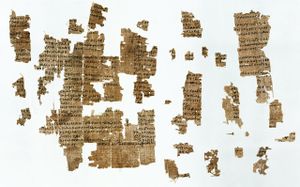
There is undoubtedly a vast amount of texts in the past that portrayed women in rather degrading ways, such as Shakespeare's The Taming of The Shrew and Mark Twain's The Adventures of Huckleberry Finn. Women in literature were predominantly depicted as they were seen and expected to be in society: weak and often placed on the sidelines. On the other hand, leading men were overtly displayed with heroic or powerful qualities. It is in this inequality in power and in strength between genders, that lead many individuals to search for literature that presented a stronger picture of women.
However, as noted in her article, 10 Misogynistic Books That Every Woman Should Read, Elissa Strauss suggests that it is important we do not forget these kinds of texts altogether. The primary reason is that they show us how far we have come in terms of acquiring more equal gender representation in books [1]. Strauss is not wrong in stating this--it is crucial that we never overlook the progress that has been made, as it can be a reminder of the work that has yet to be done.
These texts that portrayed women in this limited scope, not only reflect gender roles of the past, but perpetuate gender roles as well. They create this very rigid distinction of what exactly defines a true "man", such as being strong, the hero of the story, and a true "woman", someone who is vulnerable and often in distress. With these strict roles constantly being presented through these texts, readers begin to feel a need to fulfill this expectation of their identity as a result of their gender, as it appears to be the accepted norm in their society. These expectation trap individuals, and make it difficult for them to freely flourish and develop their identity [2].
Although there were many texts in the past that presented gender inequality among its characters, there were still a fair amount of books published that challenged these gender borders and roles. Writers such as, Sappho, Sylvia Plath and Jane Austen brought to life female characters who were resilient, intelligent and outspoken. Characters such as Esther Greenwood in Plath's The Bell Jar present the important idea that women are capable of being independent and their own heroes. Readers from an older audience group, such as adults and adolescents, can turn to these empowering texts to be reminded of the very real portrayal of strong women in literature. However, this brings to question how gender is represented within books targeted to a younger audience.
Chapter Two: Ongoing Gender Borders
Children's Literature
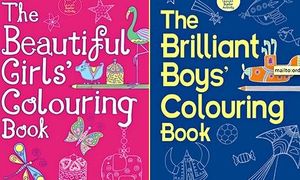
Although we have a number of books that attempt to challenge gender norms in our society, there is still a large amount of stories that create distinct roles and aspects of either gender. For children's literature specifically, Janice McCabe's study found a large gender disparity in these books.[3] The study involved looking at over 5,000 children's books released over the span of 100 years (between 1900 and 2000), finding that more males--regardless if they were human or non-human characters--are represented more than girls as central characters of the story.
A primary concern arising from these findings is that they suggest that girls are of less importance than boys [3]. Although this concern may appear rather small, it can extend to further problems for readers. Books can act as a tool to teach children about the culture within their society, and gender roles is a part of this culture.[2] In undermining and limiting the representation of girls in their books, children can further assume that girl's voices and opinions should remain disregarded, as they are seemingly unimportant to listen to.[3]
On the other hand, when there is representation of girls, many parents have noticed persistent gender stereotypes.[4] From illustrations to the content of the stories, there are certain themes that children's books follow so as to distinguish between being primarily for "girls" or for "boys" only. Of course, this is a surprise and disappointment to a number of readers; many believe that children should not be confined to these stereotypes, nor forced to choose between books just because it appears to be for a boy or a girl. Children should be free to decide whichever book (or any toy) they want, regardless of what gender audience it appears to be targeted to.[4]
Young Adult Literature
It appears that only recently readers are seeing more and more young adult (YA) novels that present characters with less gender stereotypes, and especially less gender biases against women. In the past, many young adult novels were published that still portrayed a very limited role for young girls and women alike--roles in which female characters were expected to be "passive" and to wait to be saved, as well as to be "competent, but not too competent".[5] As previously addressed, this poses a difficulty for readers, both boys and girls. Literature, especially that of the YA genre, has a powerful influence on readers through the characters they portray (of which are seen as models to the audience). Many young girls are finding new ways to create their own identities, with help from models in the books they read. Much of past YA literature, however, has emphasized the importance of appearance for many of its female characters, apart from other crucial characteristics.[6] Often, these novels indicate a solitary definition of "beauty" and what it means to be a "girl". Even more so, there is concern with the fact that a lot of these novels given to young women present their female characters with the primary goal of attaining a boyfriend, when it is argued that there are many other important goals to consider.[6]
These past novels present girls in a position where they face certain pressures and limitations in order to live up to the ideal image of a woman, but as readers view these characters as their own models, they may feel these pressures as well. From this, it is understandable that many readers may feel conflicted in their own decisions and identities, as these may contradict what is presented by their literary models. The issue here is not the fact that female characters are shown to be interested in beauty or wanting to fall in love--those decisions and interests are more than okay on their own. The problem is that these aspects seem to be the only things being portrayed and associated with female characters, when there are so many more characteristics and interests of women that need to be recognized as well.
With regards to feminism, many individuals are aware that it is not necessarily about having more power over the opposite gender, but really it is about gaining a respectable, egalitarian relation between genders. While we have been discussing women's roles in YA literature, and how they have influenced young girls and their identities, it is very important to consider how these reinforcing stereotypes may also affect boys. Although many male characters in literature are presented with more strengthening qualities--a number of them are portrayed as intelligent and occupying leadership roles--these reinforced stereotypes for boys can also place added pressures. As noted by Kathryn Jacobs in her article Gender Issues in Young Adult Literature, our society is progressively encouraging girls to "expand their roles" and enter certain careers that were once recognized as being male-dominated.[6] While this is a positive growing attitude for young women nowadays, many young boys are admonished and frowned upon when they want to participate in activities often considered more "feminine". Aside from feeling very pressured, this can negatively affect the development of boys' own identities. The uncertain atmosphere for boys is reinforced by the limited roles of males reflected in the novels they read. Indeed, the main concern is finding equal ground for both boys and girls in literature--a platform where both genders are portrayed in less confined roles.
Acknowledging the LGBT Community
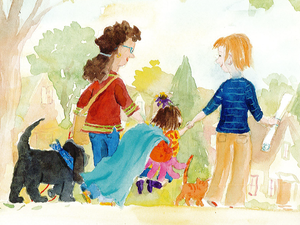
While representation of women in youth's literature has been very limited, YA and children's novels that focus on LGBT characters have also been difficult to find. In recent years, between 2013 to 2014, big publishing companies such as HarperCollins and Simon and Schuster have only published between 29 to around 47 novels with LGBT protagonists and characters.[7] To put things into perspective these numbers only apply to the young adult genre.
With regards to children's literature, it is not only in this recent decade that LGBT children's books have been published; in fact, the first LGBT-positive children's book, Heather has Two Mommies by Lesléa Newman, was released back in 1989.[8] Since then, there have been a number of LGBT-focused books for kids to read despite the initial, and quite ongoing, backlash to literature such as this.[8] The negative response to these books being published, indicates that--despite the existence of numerous LGBT books for youth to read--there is still this persistent negative stigma that seems to keep these books hidden from readers. While there are probably many people who know of these books, there is an even larger number of readers who are unaware that these books exist. In essence, a number of these titles are likely underrated books that are not as strongly marketed like many other children's books. Of course, this is something that requires change as time progresses; presenting kids with LGBT-positive books introduces and influences readers to be accepting of the diversity around them. Moreover it also assists children--who may not fit a certain mould or whose families do not fit into a "traditional stereotype" of a family--see themselves and their families in these books.[8] As previously noted, seeing this diversity in literature, and being able to see oneself in the stories they read, allows young readers to know that their differences should be celebrated and not frowned upon or hidden.
Chapter Three: Taking Action
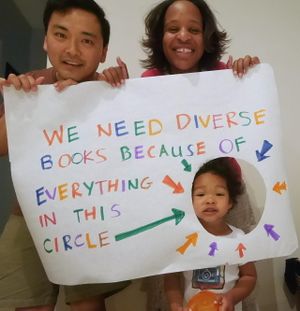
Initiatives and Campaigns
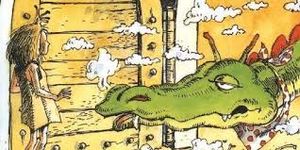
Many readers have noticed that, and frequently questioned why, finding diverse books is a challenge. As means to address this difficulty, campaigns such as We Need Diverse Books and Diversity in YA were formed. Groups such as these raise awareness of the lack of diversity within literature, but with specific focus on children's and young adult literature. For both initiatives, various forms of diversity apart from gender, such as cultural, disability and such, are also addressed. Lists of diverse books, as well as novels from marginalized writers, are given so as to help readers easily find these diverse books. At the same time, We Need Diverse Books in particular raises funds to supply more diverse literature in classrooms and libraries, while also advocating up and coming authors of diverse literature.
Many authors and readers are noticing this movement. In many internet communities for readers, such as booktube and Goodreads, as well as in many authors' websites and blogs, the tag #WeNeedDiverseBooks is trending. The spread of #WeNeedDiverseBooks presents the vast amount of individuals who are supporting the need for diversity in literature, and those who understand its important influence in the lives of much of its diverse readers.
Epilogue: Moving on From Here
Breaking Down Gender Borders
The impact of #WeNeedDiverseBooks is becoming more recognizable. Educators, librarians, readers and authors alike are becoming more aware of this need for diversity in youth's literature. Of late, many children's and young adult novels and series have been published, portraying a vast amount of diverse individuals, and characters who do not quite fit the supposed "norm" pertaining to their gender. For instance, readers see Katniss Everdeen of Suzanne Collins' The Hunger Games as a role model embodying bravery and quick-thinking skills to survive and protect her loved ones. Audiences sympathize and root for Aristotle and Dante's friendship and growing romance in Benjamin Alire Sáenz's Aristotle and Dante Discover the Secrets of the Universe, as well as their own individual journeys of self-discovery. Furthermore, children laugh and applaud Robert Munsch's clever Princess Elizabeth in The Paper Bag Princess, as she becomes a prime example of a "princess" who is capable of saving herself.
These books, through its characters, break down gender borders, and it is important that this new attitude and open-mindedness in literature is supported and persistent in the years to come. From these books, young readers learn of characteristics that transcend the physical surface of individuals, traits such as wit, strength and independence. These aspects, among many others, are emphasized as being important and most definitely pertaining to both boys and girls. With more diverse books being published, the growth and self-discovery of children and adolescents can be one that is more exciting, less intimidating and less pressured. Young readers can see less limitations and more opportunities for them to flourish, as they meet more unique characters of whom they can fully identify with.[5]
Book Recommendations
Wiki Author's Note: Hi everyone! Thank you for taking the time to read through this wiki spiel about books and the importance of representation in literature. As some of you may probably tell by now, I am a huge bookworm. Due to this, and because of the topic of this wiki article, I feel compelled to share some of my favourite YA, Children's and Middle-grade titles that present strong-willed and really well-developed characters. These following books portray, what I personally think, to be an amazing and well-represented cast of individuals--and maybe you will feel the same!!
7 Books and Series with Amazing Characters:
- The Lunar Chronicles by Marissa Meyer
- Flipped by Wendelin Van Draanen
- Out of the Easy by Ruta Sepetys
- The Paper Bag Princess by Robert Munsch
- The Throne of Glass Series by Sarah J. Maas
- The Outsiders by S.E. Hinton
- The Book Thief by Markus Zusak
References
- ↑ [1], Strauss, E. (2015, November 20). 10 Misogynistic Books That Every Woman Should Read Retrieved from http://www.elle.com/
- ↑ 2.0 2.1 [2] Introduction to Gender Roles in Literature Article List, https://www.questia.com/
- ↑ 3.0 3.1 3.2 [3], Flood, A. (2011, May 6). Study finds huge gender imbalance in children's literature. Retrieved from https://www.theguardian.com/international
- ↑ 4.0 4.1 [4], Lowther, T. (2014, March 7).Children's Books Still Promote Gender Stereotypes. Retrieved from https://newrepublic.com/
- ↑ 5.0 5.1 [5], Peterson, J. (1996). Gender bias and stereotyping in young adult literature. Children's Book and Media Review, 17(3).
- ↑ 6.0 6.1 6.2 Jacobs, K. (2004). Gender issues in young adult literature. Indiana libraries, 23(2), pp.19-24
- ↑ [6], Lo, M. (2014, December 10). 2014 LGBT YA by the Numbers. Retrieved from http://www.diversityinya.com/
- ↑ 8.0 8.1 8.2 [7], Trombetta, S. L. (2015, June 12). 30 LGBTQIA-positive children's books that'll teach kids how beautifully diverse the world is. Retrieved from https://www.bustle.com/